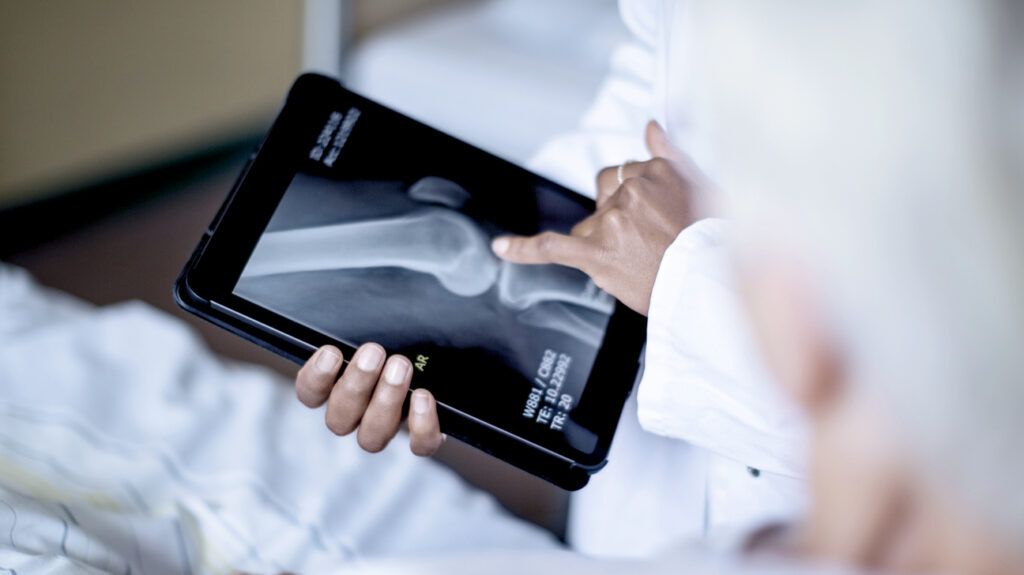Osteochondritis dissecans is a medical condition that affects the joints. Doctors stage it based on how far it has progressed, with stage I being intact and IV having a completely displaced cartilage fragment.
The condition may cause varying degrees of pain and swelling. It can also limit the range of motion in a joint.
While it presents as one of four stages, each stage requires prompt treatment to prevent it from worsening.
This article discusses the various stages of osteochondritis dissecans, diagnosis, and available treatment options.

Osteochondritis dissecans is a joint disease that occurs when a cartilage fragment separates from the underlying bone. This can happen when the local blood supply is cut off or from repetitive direct trauma to a joint.
It commonly affects the knees, elbows, or ankles of individuals who began sports at a young age. Typically, it affects a joint on one side of the body but may extend to involve the joints on both sides of the body.
According to a
There are various classification systems for grading osteochondritis dissecans. Generally, the staging considers if the cartilage fragment is totally or partially displaced or detached from the underlying bone.
The International Cartilage Repair Society classifies osteochondritis dissecans into the
- Stage I: A stable lesion with a continuous area covered by soft cartilage.
- Stage II: A stable lesion with partial discontinuity.
- Stage III: A lesion with complete continuity that is not yet dislocated.
- Stage IV: An unstable lesion with displaced fragment within the bed.
The International Cartilage Repair Society staging is based on surgical findings, while other staging methods are arthroscopic or MRI-based.
Diagnosis of osteochondritis dissecans
The doctor typically examines the joint to check for swelling, tenderness, or loose cartilage fragments.
They will then order imaging tests. X-rays help identify or localize the lesions, but they cannot determine their stability. An MRI can produce an accurate image of the lesions and help with clinical decision-making concerning lesion stability.
Therefore, MRI scans are typically effective for all stages of osteochondritis dissecans, while X-rays could be helpful in more advanced stages.
A doctor may also use arthroscopy. This involves visualizing the interior of a joint using a specialized narrow tube with an attached camera. It may reveal details beneficial in making a diagnosis.
Learn more about radiology tests for osteochondritis dissecans.
There are various treatment options available for managing osteochondritis dissecans. The type of treatment a doctor recommends depends on the stage of the disease and the age of the person.
Two common forms of
- Conservative management: This is a nonsurgical intervention that involves immobilizing the affected joint. For weight-bearing joints, immobilization is typically more prolonged to ensure proper healing. This is typically the treatment of choice for children with growing bones.
- Surgical intervention: Surgery aims to promote cartilage reformation. This is the preferred treatment for those with failed conservative management.
Conservative treatment is typically suitable for stages I and II, while surgical intervention is generally suitable for stages III and IV.
Individuals diagnosed with osteochondritis dissecans may have some questions that can assist them in making an informed decision.
Here are some questions to ask a doctor about the disease:
- What is the stage of the disease?
- Are there any warning signs of the disease?
- What are the treatment options and the most appropriate ones?
- How long does recovery take post-treatment?
- Are there any lifestyle remedies to manage the symptoms?
Osteochondritis dissecans is a clinical condition that affects the joint. It occurs when a piece of cartilage separates from the underlying bone due to a loss in the local blood supply.
It consists of four stages, and stage IV is the unstable stage of the disease. Diagnosis requires radio imaging modalities such as a plain X-ray and MRI of the joint.
Treatment entails either conservative or surgical management, depending on the stage of the disease.
